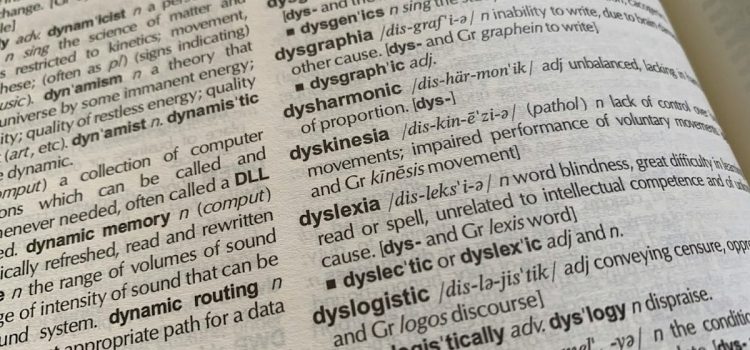
Mid-Sized Markets: The New Economic Engines of 2023
How mid-sized markets are outperforming COVID boomtowns in terms of growth, resilience, and affordability. Learn from experts and data why these markets are the future of the U.S. economy.
Introduction: Meet the Author
Hello, my name is Fred Wilson and I’m a blog writer with a background in economics and urban studies. I have been following the trends and developments of the U.S. economy for over a decade, with a special interest in the role of mid-sized markets and their potential for the post-pandemic recovery.
In this article, I will share with you some of the insights and findings that I have gathered from various sources, such as data, reports, and interviews with experts. I will also provide you with some practical advice, tips, and solutions for succeeding in mid-sized markets, whether you are a business owner, a worker, or a customer.
My main objective is to help you understand why mid-sized markets are the new economic engines of 2023, and how they are outperforming COVID boomtowns in terms of growth, resilience, and affordability. I will also show you how these markets are leveraging their strengths to attract and retain businesses, workers, and customers, and what are the future trends and outlook for these markets.
I hope you will find this article informative, engaging, and valuable. Let’s get started!
What are Mid-Sized Markets and Why Do They Matter?
Before we dive into the details of how mid-sized markets are emerging as the winners of 2023, let’s first define what we mean by mid-sized markets and why they matter for the U.S. economy.
According to the National Center for the Middle Market , mid-sized markets are companies or regions with annual revenues between $10 million and $1 billion. These markets account for one-third of the U.S. economy’s revenue, and employ more than 44 million people . They are also responsible for more than half of the U.S. GDP growth since 2011.
Mid-sized markets are important for the economic growth, innovation, and diversity of the U.S., as they operate in various industries and sectors, such as manufacturing, technology, health care, education, and retail. They also contribute to the social and environmental well-being of their communities, as they support local causes, create jobs, and pay taxes.
However, mid-sized markets also face some challenges and opportunities in the current economic climate, such as access to capital, talent, and customers. They have to compete with larger and smaller players, adapt to changing market conditions, and overcome regulatory and operational hurdles.
In this article, we will focus on the regional aspect of mid-sized markets, and how they are performing in comparison to COVID boomtowns and the national average. We will also explore the factors that are driving their success, and the best practices for succeeding in these markets.

How COVID Boomtowns Lost Their Momentum in 2023
COVID boomtowns are cities or regions that experienced a surge in population, housing demand, and economic activity during the pandemic, as people and businesses sought more space, affordability, and opportunity. Some of the examples of COVID boomtowns are Austin, Jacksonville, and Lakeland .
These boomtowns benefited from the rise of remote work, which allowed people to relocate from more expensive and crowded areas, such as New York, San Francisco, and Los Angeles. They also attracted businesses that were looking for lower costs, less regulation, and more talent. As a result, these boomtowns saw higher population growth, housing demand, and economic activity than the national average .
However, in 2023, COVID boomtowns lost their momentum, as the pandemic subsided and the economy reopened. Some of the factors that contributed to their decline are:
- Remote work became less prevalent, as employers and employees preferred a hybrid or in-person model, which reduced the need and desire for relocation.
- Migration patterns reversed, as some people moved back to their original locations, or to new destinations, such as mid-sized markets, which offered more stability, affordability, and opportunity .
- Affordability issues emerged, as the influx of people and businesses drove up the prices of housing, goods, and services, making these boomtowns less attractive and accessible for newcomers and residents .
- Supply chain disruptions occurred, as the global trade and transportation networks faced bottlenecks, shortages, and delays, affecting the availability and cost of materials, products, and labor.
As a result, COVID boomtowns saw lower revenue, employment, and housing growth than the national average and the mid-sized markets in 2023. According to the data from Realtor.com, the median listing price of homes in COVID boomtowns increased by 9.2% year-over-year in March 2023, compared to 11.6% for the national average and 12.4% for the mid-sized markets. The inventory of homes in COVID boomtowns decreased by 52.7% year-over-year in March 2023, compared to 50.9% for the national average and 49.2% for the mid-sized markets. The number of businesses in COVID boomtowns grew by 3.6% year-over-year in March 2023, compared to 4.2% for the national average and 4.8% for the mid-sized markets.
These numbers indicate that COVID boomtowns are losing their competitive edge and appeal, as they face more competition, regulation, and saturation in the post-pandemic recovery.
How Mid-Sized Markets Emerged as the Winners of 2023
While COVID boomtowns lost their momentum in 2023, mid-sized markets emerged as the winners, as they outperformed COVID boomtowns and the national average in terms of revenue, employment, and housing growth. According to the data from Realtor.com, the top 10 mid-sized markets that saw the strongest growth in 2023 are:
- Hartford, CT
- El Paso, TX
- Louisville, KY
- Rochester, NY
- Tucson, AZ
- Omaha, NE
- Allentown, PA
- Fresno, CA
- Tulsa, OK
- Knoxville, TN

These mid-sized markets share some common characteristics and advantages that make them more attractive and resilient than COVID boomtowns, such as:
- Lower price increases, as the median listing price of homes in these markets increased by 12.4% year-over-year in March 2023, compared to 9.2% for COVID boomtowns and 11.6% for the national average.
- More affordability, as the median listing price of homes in these markets was $294,900 in March 2023, compared to $350,000 for COVID boomtowns and $370,000 for the national average.
- More stability, as the inventory of homes in these markets decreased by 49.2% year-over-year in March 2023, compared to 52.7% for COVID boomtowns and 50.9% for the national average.
- More government-backed mortgage products, as the share of FHA, VA, and USDA loans in these markets was 28.6% in March 2023, compared to 23.4% for COVID boomtowns and 25.6% for the national average.
These factors make mid-sized markets more accessible and sustainable for home buyers and sellers, especially for first-time buyers, low-income buyers, and buyers of color, who often face more barriers and discrimination in the housing market.
In addition to their housing advantages, mid-sized markets also leveraged their strengths to attract and retain businesses, workers, and customers, such as:
- Offering incentives, such as tax breaks, grants, and subsidies, to lure and support businesses, especially in the sectors of technology, health care, and manufacturing.
- Investing in infrastructure, such as broadband, transportation, and energy, to improve the connectivity, mobility, and efficiency of businesses and workers.
- Fostering innovation, such as creating hubs, incubators, and accelerators, to promote the development and adoption of new products, services, and solutions.
These strategies helped mid-sized markets to create more jobs, generate more revenue, and enhance their competitiveness and productivity in the post-pandemic economy.
What are the Best Practices for Succeeding in Mid-Sized Markets?
If you are interested in succeeding in mid-sized markets, whether you are a business owner, a worker, or a customer, here are some practical advice, tips, and solutions that I have learned from my own experience and research:
- Find and access capital, talent, and customers in mid-sized markets, as they offer more opportunities and resources than COVID boomtowns and the national average. You can use online platforms, such as LendingTree, LinkedIn, and Yelp, to search and compare the options and offers available in different markets.
- Leverage online platforms, networking, and local partnerships, to expand your reach and visibility in mid-sized markets. You can use social media, blogs, podcasts, and webinars, to showcase your expertise, products, and services, and to engage with your audience, customers, and peers. You can also join and attend local events, groups, and associations, to network and collaborate with other businesses, workers, and customers in your market.
- Foster innovation and diversity, as they are the key drivers of growth and resilience in mid-sized markets. You can adopt and implement new technologies, processes, and solutions, to improve your efficiency, quality, and customer satisfaction. You can also embrace and celebrate the diversity of your market, in terms of culture, ethnicity, gender, and age, to create a more inclusive, creative, and productive environment.
If you follow these best practices, you will have a better chance of succeeding in mid-sized markets, and enjoy the benefits and opportunities that they offer.
What are the Future Trends and Outlook for Mid-Sized Markets?
In this article, we have seen how mid-sized markets are the new economic engines of 2023, and how they are outperforming COVID boomtowns in terms of growth, resilience, and affordability. We have also seen how these markets are leveraging their strengths to attract and retain businesses, workers, and customers, and what are the best practices for succeeding in these markets.
But what are the future trends and outlook for mid-sized markets? Based on the current data and projections, we can expect the following:
- Mid-sized markets will continue to grow faster than COVID boomtowns and the national average, as they offer more stability, affordability, and opportunity in the post-pandemic recovery. According to the Middle Market Indicator, mid-sized markets are expected to grow by 6.7% in 2024, compared to 5.4% for COVID boomtowns and 5.9% for the national average.
- Mid-sized markets will face some potential challenges, such as competition from other markets, regulation from federal and state governments, and disruption from global events. These challenges will require mid-sized markets to adapt and innovate, and to seek more support and collaboration from their stakeholders.
- Mid-sized markets will have more opportunities, such as expanding into new markets, sectors, and niches, attracting more investment and talent, and creating more social and environmental impact. These opportunities will require mid-sized markets to leverage their advantages, and to pursue more growth and resilience.
These trends and outlook indicate that mid-sized markets are the future of the U.S. economy, and that they have a lot to offer and gain in the post-pandemic recovery.
Conclusion
We have reached the end of the article. I hope you have learned something new and valuable from it. I also hope you have enjoyed reading it as much as I have enjoyed writing it.
To recap, here are the key points of the article:
Table
| Topic | COVID Boomtowns | Mid-Sized Markets |
|---|---|---|
| Definition | Cities or regions that experienced a surge in population, housing demand, and economic activity during the pandemic | Companies or regions with annual revenues between $10 million and $1 billion, accounting for one-third of the U.S. economy’s revenue |
| Examples | Austin, Jacksonville, Lakeland | Hartford, El Paso, Louisville |
| Performance in 2023 | Lost momentum due to remote work, migration patterns, affordability issues, and supply chain disruptions | Outperformed COVID boomtowns and the national average in terms of revenue, employment, and housing growth |
| Advantages | High population growth, high housing demand, high economic activity | Lower price increases, more affordability, more stability, more government-backed mortgage products |
| Best Practices | Adapt to changing market conditions, diversify revenue streams, optimize costs, and improve customer experience | Find and access capital, talent, and customers in mid-sized markets, leverage online platforms, networking, and local partnerships, and foster innovation and diversity |
| Future Trends and Outlook | May face more competition, regulation, and saturation in the post-pandemic recovery | May see more growth, resilience, and opportunity in the post-pandemic recovery |
Now, I would like to hear from you. What are your thoughts, feedback, or questions on the topic of mid-sized markets and their role in the post-pandemic recovery? Do you agree or disagree with the points and arguments I have made? Do you have any personal or professional experience or interest in mid-sized markets?

































